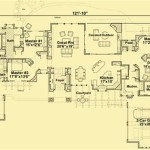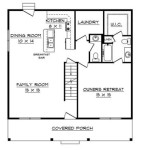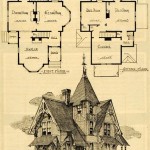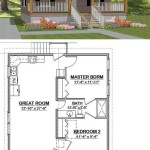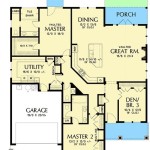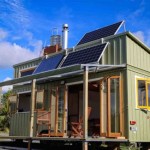Bird House Plans Simple provide guidelines and instructions for constructing a shelter or nesting site for birds in a simplified and easy-to-follow format. These plans are designed to assist individuals in creating a functional and comfortable home for birds, encouraging them to inhabit specific areas.
From attracting a variety of bird species to enhancing the aesthetic appeal of outdoor spaces, bird houses offer multiple benefits. By providing a safe and secure environment, they promote nesting, breeding, and the overall well-being of these feathered friends. Whether you’re a seasoned birdwatcher, an aspiring ornithologist, or simply someone looking to connect with nature, bird house plans can guide you in creating a welcoming sanctuary for avian visitors.
In the following sections, we’ll delve into the specifics of bird house plans, exploring the essential elements of design, materials, and techniques involved in building a successful bird house. We’ll provide step-by-step instructions, offer practical tips, and share helpful resources to assist you in creating a beautiful and functional home for birds.
Before embarking on the construction of your bird house, it’s crucial to consider the following eight key points:
- Appropriate Dimensions: Ensure the size and shape of the bird house accommodate the target bird species.
- Proper Ventilation: Provide adequate ventilation holes to maintain airflow and prevent moisture buildup.
- Predator Protection: Design features such as a slanted roof and a small entrance hole help deter predators.
- Drainage Holes: Incorporate drainage holes in the floor to prevent water accumulation.
- Durable Materials: Use weather-resistant materials like cedar or redwood to ensure longevity.
- Easy Cleaning: Consider a removable roof or side panel for effortless cleaning and maintenance.
- Aesthetic Appeal: Choose colors and designs that complement your surroundings.
- Mounting Options: Determine the best mounting method based on the location and available structures.
Keeping these points in mind will help you create a bird house that is both functional and visually appealing, providing a welcoming abode for your feathered friends.
Appropriate Dimensions: Ensure the size and shape of the bird house accommodate the target bird species.
The size and shape of the bird house play a crucial role in attracting and accommodating the desired bird species. Different bird species have specific nesting preferences and requirements, so it’s important to consider their size, nesting habits, and behaviors when designing your bird house.
- Floor Area: The floor area of the bird house should provide enough space for the target bird to move around comfortably and build its nest. For small birds like chickadees and wrens, a floor area of around 4×4 inches is sufficient, while larger birds like bluebirds and woodpeckers require a floor area of at least 6×6 inches.
- Height: The height of the bird house should be tall enough to accommodate the bird’s body and allow it to stand upright without touching the roof. A height of 6-8 inches is suitable for most small birds, while larger birds may require a height of 10-12 inches.
- Entrance Hole Size: The size of the entrance hole determines which birds can access the bird house. Smaller birds like chickadees and wrens prefer an entrance hole of around 1-1.25 inches in diameter, while larger birds like bluebirds and woodpeckers need an entrance hole of 1.5-2 inches in diameter. Avoid making the entrance hole too large, as this can attract predators.
- Shape: The shape of the bird house can also affect its appeal to certain bird species. Some birds prefer traditional rectangular or square-shaped houses, while others prefer more unique shapes like gourd-shaped or triangular houses. Experiment with different shapes to see what attracts the birds in your area.
By considering the appropriate dimensions for the target bird species, you can increase the chances of attracting and providing a suitable nesting site for your feathered friends.
Proper Ventilation: Provide adequate ventilation holes to maintain airflow and prevent moisture buildup.
Proper ventilation is crucial for the health and well-being of birds nesting in bird houses. Adequate airflow helps regulate temperature, prevents moisture buildup, and reduces the risk of mold and mildew growth, which can cause respiratory problems and other health issues for birds.
Ventilation holes should be placed near the top of the bird house, on opposite sides or corners, to create cross-ventilation. The size and number of ventilation holes will vary depending on the size of the bird house, but a general rule of thumb is to provide a total ventilation area of around 1-2 square inches.
Ventilation holes should be small enough to prevent birds from escaping or predators from entering, but large enough to allow for proper airflow. A good rule of thumb is to make the ventilation holes no larger than 1/2 inch in diameter.
Avoid placing ventilation holes directly above the entrance hole, as this can create a draft and make the bird house uncomfortable for nesting birds. Additionally, ensure that the ventilation holes are not obstructed by nesting materials or debris.
By providing adequate ventilation, you can help ensure a healthy and comfortable environment for the birds that choose to nest in your bird house.
Predator Protection: Design features such as a slanted roof and a small entrance hole help deter predators.
Protecting birds from predators is a crucial consideration in bird house design. Several features can help deter predators and keep nesting birds safe:
- Slanted Roof: A slanted roof helps prevent predators from perching on top of the bird house and reaching inside. The angle of the roof should be steep enough to make it difficult for predators to gain a foothold.
- Small Entrance Hole: A small entrance hole limits the size of predators that can enter the bird house. The entrance hole should be large enough for the target bird species to enter and exit comfortably, but small enough to prevent larger predators from squeezing inside.
- Predator Guard: A predator guard is a metal or plastic barrier that can be placed around the entrance hole. Predator guards make it even more difficult for predators to reach inside the bird house and can also deter squirrels and other animals from chewing on the entrance hole.
- Multiple Entrance Holes: Providing multiple entrance holes can give birds an escape route if a predator is trying to enter the bird house. The entrance holes should be placed on different sides of the bird house to provide multiple escape options.
By incorporating these predator protection features into your bird house design, you can help keep nesting birds safe from harm and increase the chances of successful nesting.
Drainage Holes: Incorporate drainage holes in the floor to prevent water accumulation.
Drainage holes are an essential feature of bird house design, as they prevent water from accumulating inside the house and causing problems for nesting birds. Water accumulation can lead to mold and mildew growth, which can cause respiratory problems and other health issues for birds. Additionally, wet nesting material can become uncomfortable and even dangerous for chicks.
Drainage holes should be placed in the floor of the bird house, near the back or sides. The holes should be large enough to allow water to drain out easily, but not so large that they create a draft or allow predators to enter. A good rule of thumb is to make the drainage holes about 1/4 inch in diameter.
In addition to drainage holes in the floor, you can also consider adding a drainage tray under the bird house. A drainage tray will catch any water that drips out of the drainage holes and prevent it from staining your deck or patio.
By incorporating drainage holes into your bird house design, you can help ensure a dry and comfortable nesting environment for the birds that choose to nest in your bird house.
Durable Materials: Use weather-resistant materials like cedar or redwood to ensure longevity.
Choosing durable materials for your bird house is essential to ensure it can withstand the elements and provide a long-lasting home for nesting birds. Weather-resistant materials will protect the bird house from rain, snow, sun, and wind damage, ensuring it remains in good condition for many years to come.
- Cedar: Cedar is a naturally rot-resistant wood that is ideal for bird house construction. It is durable, lightweight, and has a pleasant aroma that birds find appealing. Cedar is also resistant to insects and decay, making it a low-maintenance option.
- Redwood: Redwood is another excellent choice for bird houses due to its natural resistance to rot and decay. It is a strong and durable wood that can withstand even the harshest weather conditions. Redwood is also relatively lightweight, making it easy to work with and mount.
- Cypress: Cypress is a durable and rot-resistant wood that is also resistant to insects and decay. It is a good choice for bird houses that will be exposed to a lot of moisture or humidity.
- Plastic: Plastic bird houses are a low-maintenance option that is easy to clean and disinfect. They are also lightweight and easy to mount. However, plastic bird houses can become brittle in cold weather and may not be as durable as wood bird houses.
By choosing durable materials for your bird house, you can help ensure it provides a safe and comfortable home for nesting birds for many years to come.
Easy Cleaning: Consider a removable roof or side panel for effortless cleaning and maintenance.
Regular cleaning and maintenance are essential to keep bird houses in good condition and prevent the buildup of mold, mildew, and parasites. A removable roof or side panel makes cleaning and maintenance a breeze, allowing you to easily access the inside of the bird house to remove old nesting material, disinfect surfaces, and make any necessary repairs.
- Removable Roof: A removable roof is the most common type of easy-cleaning feature for bird houses. The roof is typically held in place by screws or nails, making it easy to remove and replace. This allows you to easily access the inside of the bird house for cleaning and maintenance.
- Removable Side Panel: A removable side panel is another option for easy cleaning. The side panel is typically held in place by hinges or latches, making it easy to open and close. This type of design provides even easier access to the inside of the bird house, making it ideal for bird houses that require frequent cleaning or maintenance.
- Easy-Access Doors: Some bird houses feature easy-access doors that allow you to inspect the inside of the bird house without having to remove the entire roof or side panel. These doors are typically located on the front or side of the bird house and can be opened and closed with a simple latch or hinge.
- Smooth Interior Surfaces: Bird houses with smooth interior surfaces are easier to clean and disinfect. Avoid using rough or porous materials inside the bird house, as these can harbor bacteria and parasites. Smooth surfaces also make it easier to remove old nesting material and debris.
By incorporating easy-cleaning features into your bird house design, you can make it easier to keep the bird house clean and sanitary, which will help to promote the health and well-being of the birds that nest in it.
Aesthetic Appeal: Choose colors and designs that complement your surroundings.
The aesthetic appeal of your bird house is an important consideration, as it can enhance the beauty of your outdoor space and attract birds to your yard. When choosing colors and designs, consider the following factors:
- Color Scheme: Choose colors that complement the surroundings of your bird house. If you have a natural landscape, earth tones like green, brown, and beige will blend in well. For a more modern look, you can choose brighter colors like blue, red, or yellow.
- Architectural Style: Consider the architectural style of your home and other structures in your yard when choosing a bird house design. A traditional bird house with a pitched roof will complement a classic home, while a more modern bird house with a flat roof will look better with a contemporary home.
- Personal Preferences: Ultimately, the best way to choose a bird house that appeals to you is to select colors and designs that you personally enjoy. If you have a favorite color or pattern, incorporate it into the design of your bird house.
- Bird Preferences: While aesthetics are important, it’s also important to consider the preferences of the birds that you want to attract. Some birds prefer natural colors and designs, while others may be more attracted to brighter colors and patterns.
By taking the time to choose colors and designs that complement your surroundings and appeal to birds, you can create a bird house that is both beautiful and functional.
Mounting Options: Determine the best mounting method based on the location and available structures.
The mounting method you choose for your bird house will depend on the location you want to place it and the available structures in your yard. Here are four common mounting options to consider:
- Tree Mounting: Mounting your bird house on a tree is a classic option that provides a natural and secluded nesting site for birds. When choosing a tree, select one that is healthy and has a strong branch that can support the weight of the bird house. You can use screws or nails to attach the bird house to the branch, or you can use a specialized tree mounting bracket.
- Pole Mounting: Mounting your bird house on a pole is a good option if you don’t have any suitable trees in your yard. You can purchase a metal or wooden pole specifically designed for mounting bird houses, or you can use a sturdy wooden post or metal pipe. Sink the pole into the ground at least 2 feet deep to ensure it is stable, and then attach the bird house to the pole using screws or nails.
- Wall Mounting: Mounting your bird house on a wall is a good option if you want to place it near your home or on a deck or patio. You can use screws or nails to attach the bird house directly to the wall, or you can use a specialized wall mounting bracket. Be sure to choose a location that is protected from the elements and is not too close to windows or doors.
- Hanging Mount: Hanging your bird house from a tree branch or hook is a good option if you want to create a more whimsical look. You can use a wire or rope to hang the bird house, or you can use a specialized hanging bracket. Be sure to choose a location that is protected from the elements and is not too close to windows or doors.
Once you have chosen a mounting method, be sure to follow the manufacturer’s instructions for installation. Proper installation will ensure that your bird house is securely mounted and will provide a safe and comfortable home for nesting birds.










Related Posts

